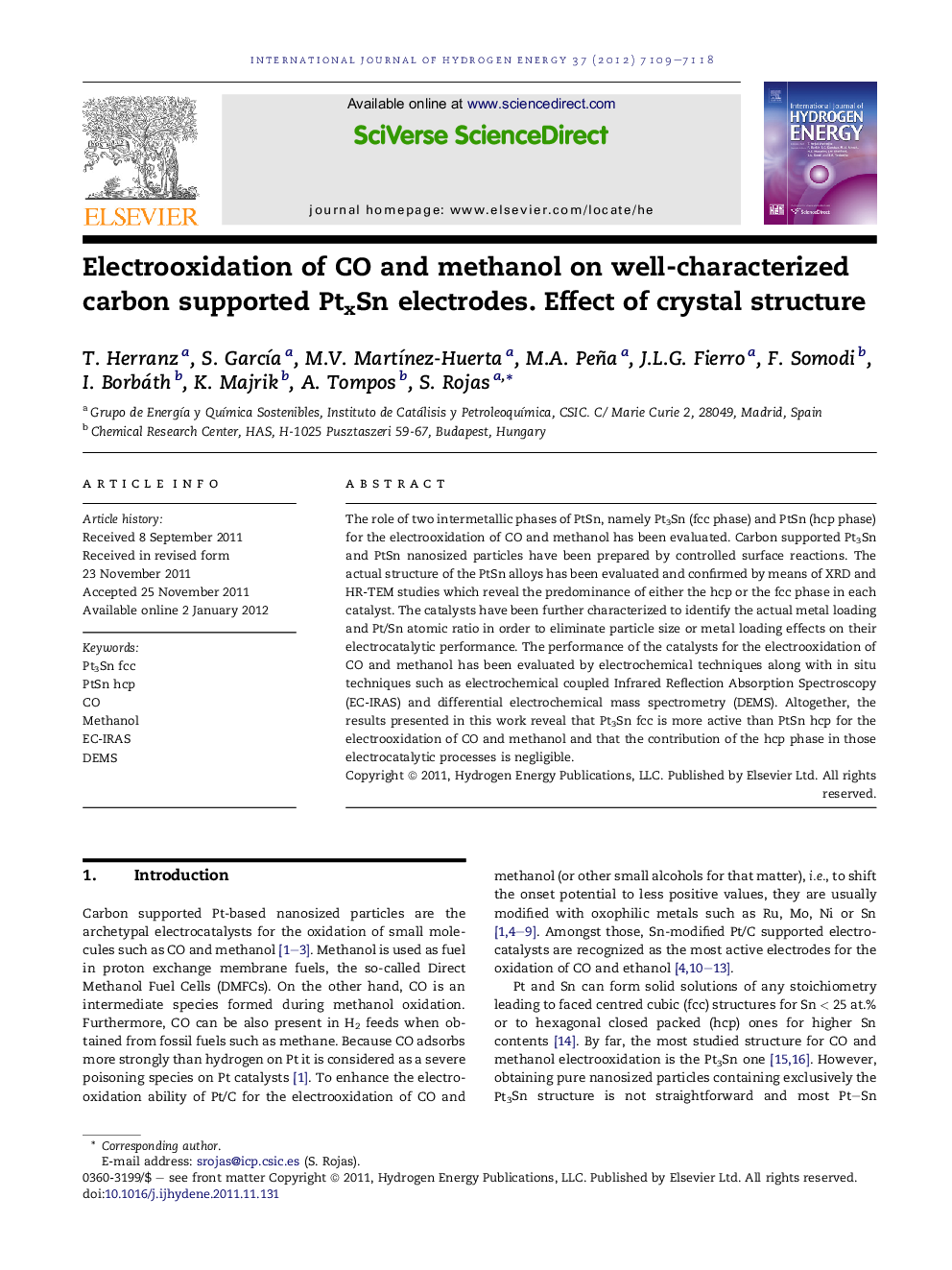| Article ID | Journal | Published Year | Pages | File Type |
|---|---|---|---|---|
| 1276657 | International Journal of Hydrogen Energy | 2012 | 10 Pages |
The role of two intermetallic phases of PtSn, namely Pt3Sn (fcc phase) and PtSn (hcp phase) for the electrooxidation of CO and methanol has been evaluated. Carbon supported Pt3Sn and PtSn nanosized particles have been prepared by controlled surface reactions. The actual structure of the PtSn alloys has been evaluated and confirmed by means of XRD and HR-TEM studies which reveal the predominance of either the hcp or the fcc phase in each catalyst. The catalysts have been further characterized to identify the actual metal loading and Pt/Sn atomic ratio in order to eliminate particle size or metal loading effects on their electrocatalytic performance. The performance of the catalysts for the electrooxidation of CO and methanol has been evaluated by electrochemical techniques along with in situ techniques such as electrochemical coupled Infrared Reflection Absorption Spectroscopy (EC-IRAS) and differential electrochemical mass spectrometry (DEMS). Altogether, the results presented in this work reveal that Pt3Sn fcc is more active than PtSn hcp for the electrooxidation of CO and methanol and that the contribution of the hcp phase in those electrocatalytic processes is negligible.
► Catalysts containing either the Pt3Sn fcc or the PtSn hcp phase were prepared. ► The electrocatalytic performance of the fcc phase surpasses that of the hcp one. ► The higher activity accounts the higher dispersion of the Pt sites on the hcp.
